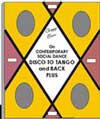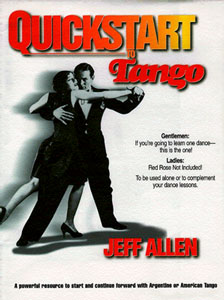
TANGO
| EROTIC
PUSH-ME PULL-YOU "Contrary
to the popular image of tango as a one- sided expression of Latin machismo, the dance
allows both sexes to express the erotic push-me-pull- you of the mating game. It may
conclude with the woman in a posture of surrender, even sexual abandon, but the preceding
tension of the dance clearly shows she has been no pushover." -
LONDON TIMES - 28
June 1995 |
The TANGO is
one of the most popular, and most fascinating, of the ballroom dances. No respectable
ballroom in town will end a night without at least five sets of the Tango. Its popularity
can probably be attributed to the exceptional challenge which the dance poses on both
partners to interpret its sensually rhythmic music into a quite liberal yet refined
expression of the rituals of seduction.
The history and character of the dance
allows modern dancers the freedom of jointly creating and unfolding a dramatic story while
each partner maintains individual style, even as the dance execution demands full and
deliberate control of each body movement. Thus a simple spontaneous interpretation or an
intricately choreographed piece can both be a truly exhilarating performance and
experience for both partners.
Tango in the Philippines was developed
from the American style, following its introduction by the Americans in the early part of
20th century. At first the Filipino aristocracy studiously copied the American patterns,
and performed these in their elite clubs and home parties, unaware of the originally
disreputable origins of the dance. Later the dance was picked up by other family members
who tried the dance steps and character as they visually observed others performing it.
Soon new amalgamations and syncopations compatible with our spirit of creativity and
individualism were produced.

|

"Dancing Tango on 9 de Julio Avenue"
by Leonor Escardo.
Check out her other "to die for" works at her home page.
Learn
more about the Universal Unit System from Ms. Skippy Blair's
DISCO TO TANGO
and BACK PLUS


Jeff Allen's
Quickstart to Tango
is a 'how to' of Argentine & American Tango, and contains
discussions on Technique, Exercises, Choreography & Attitudes for both Tango
styles.
Filipino dancers will likely find this book the next best thing to studying
Argentine Tango from a video or with the best teacher.
|
